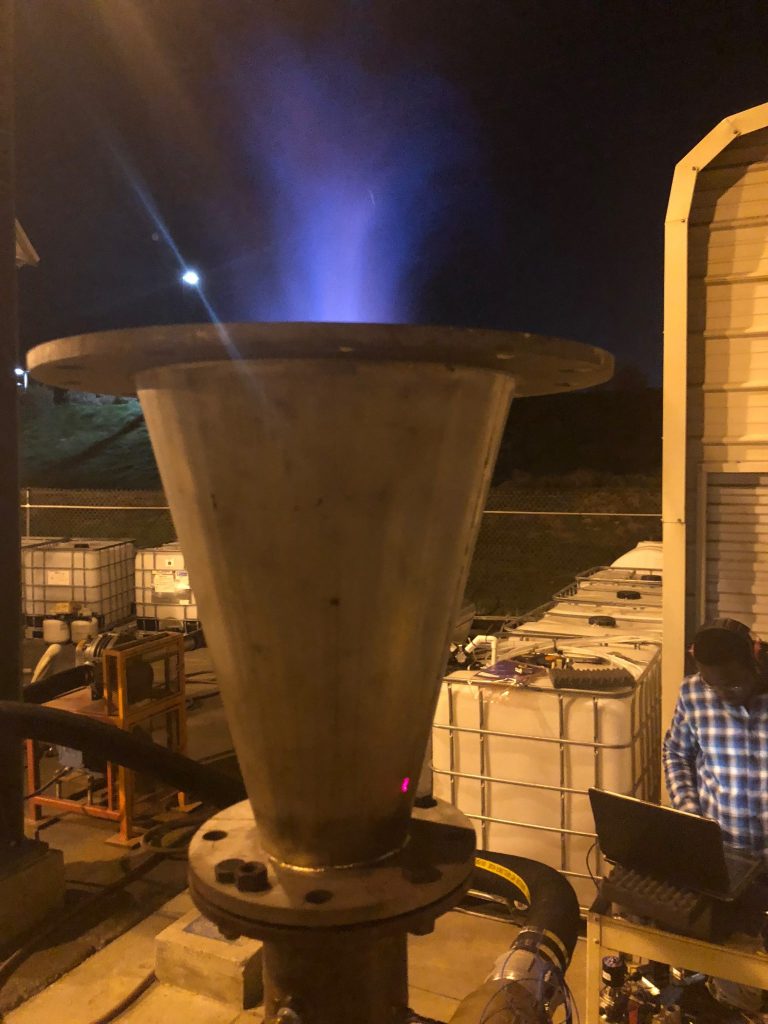Below, a traditional pulse-deflagration burner is operated using a stoichiometric mixture of propane and air. This type of “pulse-jet” burner has been used in a variety of industrial applications to increase heat-transfer, through heat-exchangers for example, and in some limited cases, used for missile propulsion; for example, Germany’s V-I rockets of WWII infamy were powered using pulse-deflagration burners, resulting in the nick-name “buzz-bombs” because of the high-frequency pulses.
However, when using the same amount of air and the same amount of fuel, a pulse-detonation burner generates so much more power as evidenced by the fact that the shockwaves are heard 5-miles distant from the source. The power difference is based on the instantaneous ignition of the air/fuel mixture — verses the semi-continuous combustion (heating) of the same mixture.
Pulse-detonation is a breakthrough technology that will enable high-throughput biomass gasification. Time, temperature, and turbulence, are the three parameters that control the biomass gasification rate. Pulse-detonation has the potential to increase performance my significantly increasing the turbulence.





